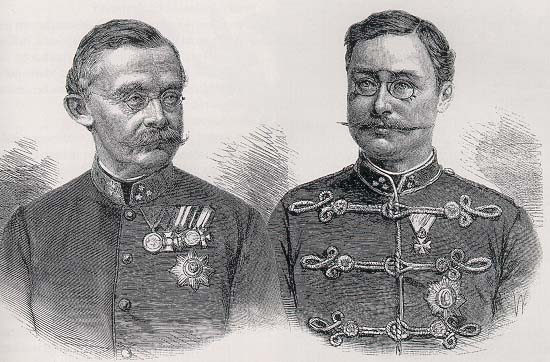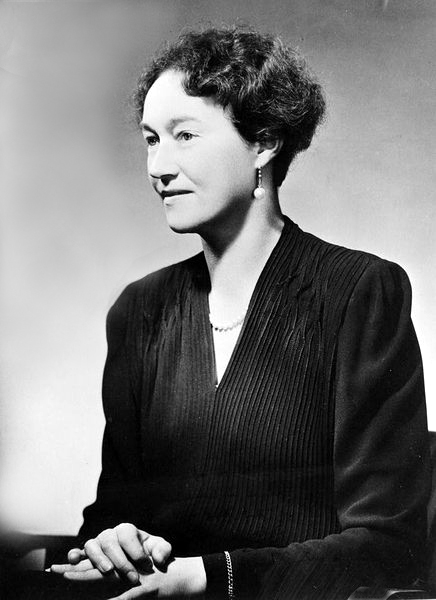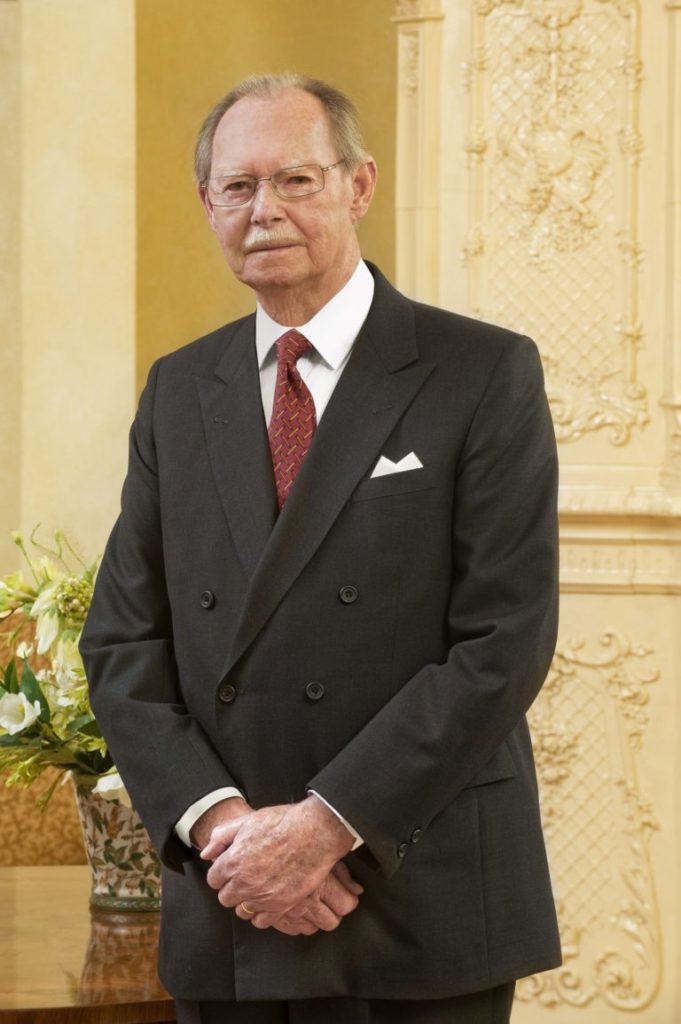Europe has ten remaining hereditary monarchies. Luxembourg is the only one that is a grand duchy – a country headed by a Grand Duke or Grand Duchess. The modern state of Luxembourg was formed in 1815 after the defeat of Napoleon, and the Congress of Vienna, which formed the new state, decided it would be a grand duchy. They were in a personal union with the Kingdom of the Netherlands with the Dutch King also serving as Grand Duke of Luxembourg.
However, in 1890, the Dutch King died without a male heir bringing his daughter to the throne. Luxembourg’s laws of succession did not allow for a female monarch, so Adolphe of Nassau became Grand Duke, and his descendants reign to this day. The current Grand Duke is Henri who will mark 20 years on the throne on 7 October.
Royal Central takes a look at the monarchs of the House of Nassau.
Adolphe of Nassau
Adolphe was born in 1817 in the Duchy of Nassau. He succeeded his father in 1839 as the last sovereign Duke of Nassau reigning until the duchy was absorbed into the Kingdom of Prussia in 1866.
He married twice, firstly in 1844 to Grand Duchess Elizabeth Mikhailovna of Russia. She died a year later in childbirth with a stillborn daughter. A grief-stricken Adolphe had a Russian Orthodox Church built in her honour where she was buried. In 1851, he married a second time to Princess Adelheid-Marie of Anhalt-Dessau by whom he had five children with only two surviving until adulthood.
In 1890 the Dutch King died without a male heir. While Dutch succession laws allowed for female monarchs, Luxembourg did not allow for female monarchs, so the throne of that country passed to Adolphe. He reigned until his death in 1905.

Guillaume IV
Guillaume was born in 1852, the eldest son of Adolphe, Duke of Nassau and Adelheid-Marie, Duchess of Nassau. He was the heir to the throne of Nassau until it was absorbed into the Kingdom of Prussia in 1866.
In 1890 his father became Grand Duke of Luxembourg, and Guillaume became the heir to the throne of Luxembourg.
In 1893 Guillaume married Infanta Marie Anne of Portugal, a Catholic princess. Although he was a Protestant, Guillaume believed a Catholic country should have a Catholic monarch. The couple had six daughters – all of whom were raised Catholic.
In 1905, he succeeded his father to the throne of Luxembourg. In 1907, finding himself without a male heir, he had the succession laws changed to allow his eldest daughter, Marie-Adélaïde, to succeed him. He died in 1912.
Marie-Adélaïde
Marie-Adélaïde was born in 1894 in Luxembourg as the eldest daughter of the Hereditary Grand Duke and Hereditary Grand Duchess of Luxembourg. In 1907, she became heiress to her father when the succession laws were changed to allow for a female monarch. She became the first reigning female Grand Duchess when her father died in 1912.

When World War One broke out in 1914, Luxembourg declared neutrality which was not respected by Germany who invaded. Marie-Adélaïde was seen as being too cooperative with the German invaders, hosting a visit by Kaiser Wilhelm II and allowing the German Crown Prince to establish temporary headquarters in Luxembourg. She was also seen as interfering in the political system, permitted in the constitution, which gave her considerable powers.
At the end of the war, there was considerable opposition inside and outside of Luxembourg for her remaining on the throne, and in January 1919, she agreed to the request of Parliament that she abdicate in favour of her sister Charlotte. Afterwards, she travelled throughout Europe and became a nun. Marie-Adélaïde died of influenza in Bavaria in 1924 at the age of 29. She never married or had children.
Charlotte
Charlotte was born in Luxembourg, the second daughter of the future Grand Duke Guillaume and Grand Duchess Marie Anne. Upon her father’s death in 1912, her older sister, Marie-Adélaïde, came to the throne. She would prove to be an unpopular monarch due to her perceived friendly relations with the invading Germans during World War One and her political interference. Under pressure from Parliament, she abdicated in January 1919, and Charlotte ascended to the throne. A referendum that year voted to continue the monarchy, but reduce its powers.
On the 6 November 1919, she married her first cousin, Prince Felix of Bourbon-Parma. The marriage, which lasted until the death of Prince Felix in 1970, produced six children.

At the outbreak of World War Two, Luxembourg again remained neutral, but Germany invaded in 1940. Mindful of her sister’s mistakes, Charlotte went into exile in London with her government.
In the years after the war, Charlotte sought to raise the profile of her small country. She abdicated in favour of her son, Jean, in 1964 after a reign of 45 years. She died in 1985.
Jean
Jean was born in 1921 in Luxembourg. He was the eldest son of Grand Duchess Charlotte and Prince Felix. On his 18th birthday, he was named Hereditary Grand Duke or heir apparent of the throne of Luxembourg.
In 1940, Germany began a four-year occupation of Luxembourg. Jean took refuge with his father and siblings in the United States while his mother remained in London with her government. He studied law and political science at the Universite Laval in Quebec City, Canada. In 1942, Jean joined the British Army as a volunteer in the Irish Guards, and he rose to the rank of Captain in 1944. He participated in the D-Day invasion of Normandy and participated in the liberation of Luxembourg.
In 1953, he married Princess Joséphine-Charlotte of Belgium. Their marriage, which lasted 52 years, produced five children. In 1964, his mother, Grand Duchess Charlotte, abdicated in favour of Jean.

The reign of Grand Duke Jean was one of the most prosperous periods in the history of Luxembourg. The degree of stability in the country’s politics, economy and social life was without precedent thanks in part to the influence of the Grand Duke and his wife.
Jean abdicated on 7 October 2000 in favour of his son, Henri, after a reign of 36 years. Joséphine-Charlotte died in 2005, and Jean lived until 2019. When he died at the age of 98, he was the oldest living former monarch in the world.
Henri
Henri was born in 1955 in Luxembourg as the eldest son and second child of Hereditary Grand Duke Jean and Hereditary Grand Joséphine-Charlotte. He was educated in Luxembourg and France. He undertook military officer training at Sandhurst and then studied Political Science at the University of Geneva, Switzerland.
While he was studying in Geneva, he met the Cuban-born Maria Teresa Mestre y Batista. They married in February 1981and have five children, Hereditary Grand Duke Guillaume, Prince Félix, Prince Louis, Princess Alexandra and Prince Sébastien.
Henri came to the throne on the abdication of his father on 7 October 2000. This year he will mark 20 years on the throne.

